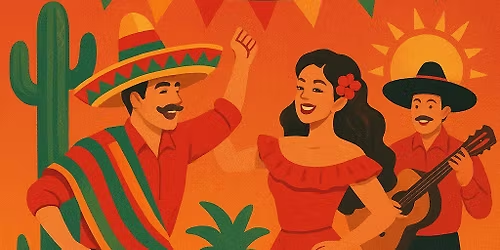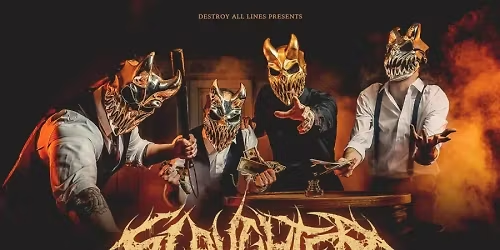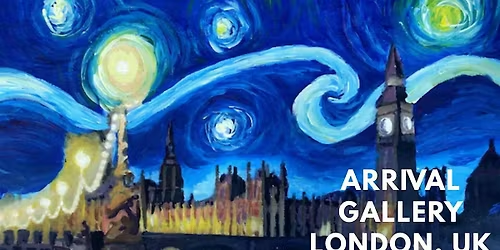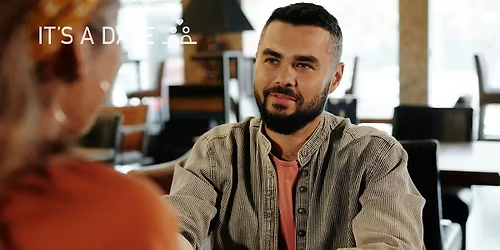
About this Event
Silk RoadGao Hong & LusardiThe skylark, or ‘Alondra’ in Spanish, has inspired many a poet and musician, more so than any other species of bird. Its song, bursting with passion and vigour, begins as it shoots vertically from its nest, in search for a mate, up to around 600 metres high; most birds rarely go beyond 200. This bold, proud call, which is often the first heard on a bright, dewy morning, signifies fresh acquittances and new beginnings – beckoning the courageous spirit within us all to step up...In the true character of Shelley’s “blithe spirit”, Chinese pipa master Gao Hong takes on yet another creative challenge, just one year after the release of her award-winning album House of Friendship with Senegalese kora player Kadialy Kouyate. This time, thanks to a rare opportunity to record in Abbey Road Studios Gao presents us with... Alondra...“When the chance arose to record in Abbey Roads, I first thought I would do a solo recording of improvisations and some of my own compositions. But then I realised what an incredible opportunity it would be for me to work with an artist from London. It was another chance for me to do what I love – pushing my boundaries and learning by collaborating with different artists from across the globe.”And so, Gao rose from her nest, skylark style, and started the search for a partner who would join her on this courageous pursuit. With just a week to go until she was scheduled to record, she needed to find someone who was capable of working as swiftly as her. Having previously performed with the Middle Eastern oud and delved into many other genres such as Afro-American jazz, klezmer, bluegrass, gospel and pop, it was Buenos Aires-born but London-based flamenco guitarist Ignacio Lusardi Monteverde that piqued her interest...“I had never worked with a flamenco guitarist before; in the past, I have only worked with classical guitarists and a guitar quartet, so I felt that this would be the biggest challenge for me. I love to take risks.”Inspired by the challenge himself, Ignacio Lusardi Monteverde was delighted to get involved. Despite having just returned from a tour, he dove headfirst into the endeavour, meeting Gao for the first time in his rehearsal space (Pixaudio Studios, Greenwich), just days after the project’s proposal.After initial introductions were under way (Gao’s official name is Hong, but after spending many years in the west, she has grown accustomed to people calling her Gao) they got to know each other on a more musical level. And slowly, a new, unique musical interaction began to unfold as they experimented with the different components of their cultural roots.They opened the session with some melodies that Ignacio had developed over the years, and the duo began to interchange ideas, based on a mixolydian mode in the ‘palo’ (rhythm) of tango flamenco. As Ignacio explains,“After hearing Gao playing and improvising, I knew that something really new was about to be created, which felt like an awaking call to a new day; this naturally developed into the album’s first track – Skylark Call.”Next, Gao presented the beginnings of the piece Longing for My Lover – a Chinese folk tune from Yunnan Province that depicts a woman searching for her beloved. Gao used the basic Chinese musical elements and improvisation to share the emotions of the story. Ignacio, hearing her call, joined her, creating a conversation between two lovers.Ignacio composed Prayer as a tribute to the people he had lost during COVID-19. The haunting flamenco guitar sets the scene for sombre feelings, and as the song develops, the rhythmic tapping of the Chinese pipa and the guitar’s melodic lines blend together – intensifying the energy and conjuring up a dance between the two. A powerful yet melancholy performance from the Chinese pipa introduces an emotional dimension to the song, providing an outlet for the intense yearning and suffering that are part of flamenco culture.Both stringed instruments are thought to have come from the Middle Eastern Oud. But when it arrived in the east, through the Silk Road, it became the pipa, and when it reached the west, it became the lute and later the guitar. They are also played in the opposite manner to each other: the pipa is plucked outwards while the flamenco fingerstyle plucks inwards. This divergence was also reflected in Gao and Ignacio’s playing styles as Ignacio often follows strict, regimented patterns, typical of flamenco and used to help guide the dancer in a performance, whereas Gao is more accustomed to improvising. Or, as she so beautifully refers to it as ‘flying, freely like butterflies.’“Ignacio’s style contains elements not found in Chinese music; one example is his use of different scales and modes. The primary scale used in Chinese music is a five-tone pentatonic scale, whereas Ignacio uses the Phrygian and other modes, so I need to think outside of the box to improvise with him. The second thing is that I have to strictly follow him in playing the unusual rhythms, meters and phrases he uses, many of which overlap. Although it has been a big challenge to play his style of music, it’s also very rewarding!” – GaoThese challenges reveal that the combination of these two musical languages is as complex as it is beautiful – much like the structure of the skylark’s song, which incorporates melodic fragments of other bird’s songs into its own bold and spontaneous melody.Ignacio, on the other hand, is well accustomed with this blending of numer- ous styles because it forms the core of today’s flamenco music. Similar to the lark, who incorporates an assortment of influences from its various neighbours, flamenco music is thought to have begun in Rajasthan and the Punjab regions of India, moved westward, and finally ended up in the Iberian Peninsula, thus producing an exotic mix of Hindustani, Jewish, Moorish and finally Andalusian folklore elements. As Ignacio explains,“It is common in flamenco to carry musical phrases, refrains and verses with you. They are pearls that are orally passed down from previous generations.The preservation of this musical content is an important practise as it keeps the identity of the tradition alive. Renovating it is only accepted within the tradition when justified or required for the evolution of the style, and only when it is done respectfully.”It was while reflecting on the influences of their, at first glance, divergent cultures that Gao and Ignacio noticed the similarities in clothing and appearance between the South American natives, including those in Ignacio’s hometown of Buenos Aires, and the Mongolians. This connection inspired Song of the Nomads, a piece reflecting on the intercontinental to-and-fro of Native Americans and Mongolians from eastern Eurasia to the Americas via the Bering Strait.“One particular technique I use produces a clicking sound similar to trotting horses as they are ridding throughout the vast Mongolian fields”, says GaoThe following offering from Ignacio is On the Clock. He sets the scene by using traditional melodies in the style of bulería flamenco, while Gao embellishes it with her own improvisational skills. Bulerías are a lively and rhythmic style of flamenco music and Andalusian dance, as Ignacio describes,“They often feature improvisation and call-and-response interactions between singers, dancers and musicians. It’s essential to maintain the fiery and spirited nature of this art form while performing or dancing bulerías, as well as a steady pulse – like a clock.”Impressions of Ronda is another piece from Ignacio and is inspired by ancient melodies from the flamenco musician Ramón Montoya, who was the first artist to record in the musical style of Rondeña in the 1930s. This style is believed to have originated in the town of Ronda, Andalusia, which gives it its name. It’s an essential part of the flamenco repertoire and has been passed down through generations. This is a highly regional and diverse art form, as Ignacio reveals...“The Rondeña is characterised by its slow tempo and mournful, melancholic melodies. It often evokes feelings of sadness and nostalgia and is typically performed in the Phrygian mode, which contributes to its distinctive and exotic sound. The rondeña style is known for its emotional depth and powerful expression, making it a favourite among both performers and audiences for its ability to convey intense feelings.”In order to embrace this feel of emotional expression, a significant portion of this track was spontaneously composed in the studio without any prior discussion. Unlike the other tracks that had a pattern or idea to work upon, this one was more, in Shelley’s words “... profuse strains of unpremeditated art”, as Gao and Ignacio chose to simply ‘fly together’.“We both developed our own ideas through the use of improvisation... When I say improvisation, I don’t refer to jazz improvisation per se, but the simple free exercise of creating melodies on the go without many pre-existing patterns.” – IgnacioLa Paloma (The Dove) tells the story of a dove bird who sings to a man each morning to remind him of old memories. For Gao, the dove brings back childhood memories related to her musical upbringing...“I wouldn’t normally choose such a popular song to include on an album, but La Paloma has special significance to me. I first heard La Paloma when I was a teenager; it was the first time I heard any music from outside of China. It combined traditional Spanish flamenco and Cuban rhythms that were completely new to my ears. The piece also had impressive new melodic flavours that I enjoyed listening to. Every time I think of South America, this piece comes to mind, and now I’ve finally had the opportunity to play with a great flamenco guitarist. For this piece, I intentionally avoided excessive improvisation to preserve the childhood memories within me.”Gobi Trail was commissioned from Gao by PBS/TPT television for their six-part documentary series, Made in China. It represents the coming together of these two instruments via the Silk Road, as they travel through the dry desert sand, the unsteady paces of the camels, and the eventual celebration of diverse cultures joining together in peace, cooperation and happiness.The pipa and flamenco guitar have both a wide array of techniques that are often played in contrasting ways on each instrument. I think this piece is a good way to show the ability of both instruments.” – GaoWe come to an end with the composition Triana. Based on a well-known Spanish melody, Gao and Ignacio improvise in the rhythm of rumba flamenca, a vibrant kind of flamenco music and dance that has its roots in 19th century Spain. The traditional flamenco music and dance, Afro-Cuban rhythms and Gypsy (Romani) music elements are a few influences found in this palo. The Gypsy population made a vital contribution flamenco music, especially the rumba flamenca.In contrast to the album’s influences dating back centuries, Alondra was produced rather swiftly. Within just one week, Gao and Ignacio went from talking over the idea, to rehearsals in Greenwich, to recording the final pieces at Abbey Road. A process that demonstrates the possibilities that can be achieved when two musical creatives come together to exchange cultural stories and histories.“My concept for such collaborations is to blend each other’s music together. I want the music we create to bring people together. On this album, our music is not specifically from China or Argentina. It combines elements and musical languages from both of our roots into a new, one-of-a-kind musical expression.”
Event Venue & Nearby Stays
Bull's Head, 373 Lonsdale Road, London, United Kingdom
GBP 16.96










